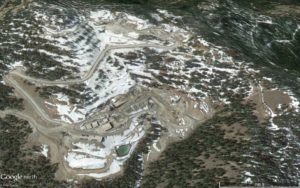Ferry County Court Upholds Buckhorn Gold Mine Discharge Permit
Buckhorn Mine must leave the water as clean as it was prior to mining
On February 22, 2017, Ferry County Superior Court Judge Pat Monasmith denied Crown Resources/Kinross’ appeal of the Pollution Control Hearings Board (PCHB) July 30, 2015 decision, upholding the NPDES (National Pollution Discharge Elimination System) permit issued by Washington State Department of Ecology. This ruling affirms that the water surrounding the Buckhorn Mine must be left as clean as it was before the mine was developed. The Buckhorn Mine continues to discharge pollutants into the environment in violation of their waste discharge permit.
The court reviewed the nearly 10,000 page record and heard arguments from Crown, Ecology, and the Okanogan Highlands Alliance, who was an intervener in the case. Acting in its appellate capacity, the court decided that the PCHB had considered and relied upon substantial evidence when it upheld the permit and that the judge would not substitute his judgment for the judgment of the board.
Tasked only with reviewing the order of the PCHB and ensuring that the hearings board had relied on substantial evidence and did not make a prejudicial error of law, the court found that Crown had failed to meet its burden to prove otherwise. Reading directly from OHA’s brief, the judge cited the copious amount of evidence relied on by the board and stated he found that Ecology has made a compelling argument regarding the sole legal issue before the court, summarily upholding the PCHB decision and the validity of the permit.
“Cleaning up the water at mine site to the standard it was when the mine was permitted is the commitment that the company made to the agency and the community, and it is the right thing to do.” states David Kliegman, Executive Director of the Okanogan Highlands Alliance. “It is OHA’s hope that many of the good jobs that Kinross brought to the area will continue, as the work to reclaim and close the mine moves forward.”
In his brief to the court, OHA’s attorney, Paul Kampmeier, stated, “Crown does not challenge the Board’s legal conclusions regarding the validity of the permit; instead, it argues the Board improperly weighed or ignored Crown’s evidence in making its findings of fact… Crown argues to the wrong standard of review when it contends the evidence supporting its position requires reversal of the Board’s decision. Crown must instead demonstrate that the findings it challenges do not have a basis in the record.”
The NPDES permit clarifies the farthest extent from the mine that contaminants are allowed to spread. It also affirms that the water quality criteria (beyond this farthest extent) is set at the background level, as it was before the mine was constructed.
